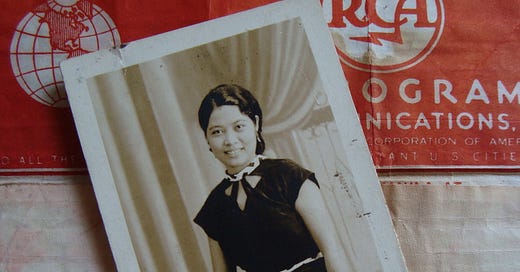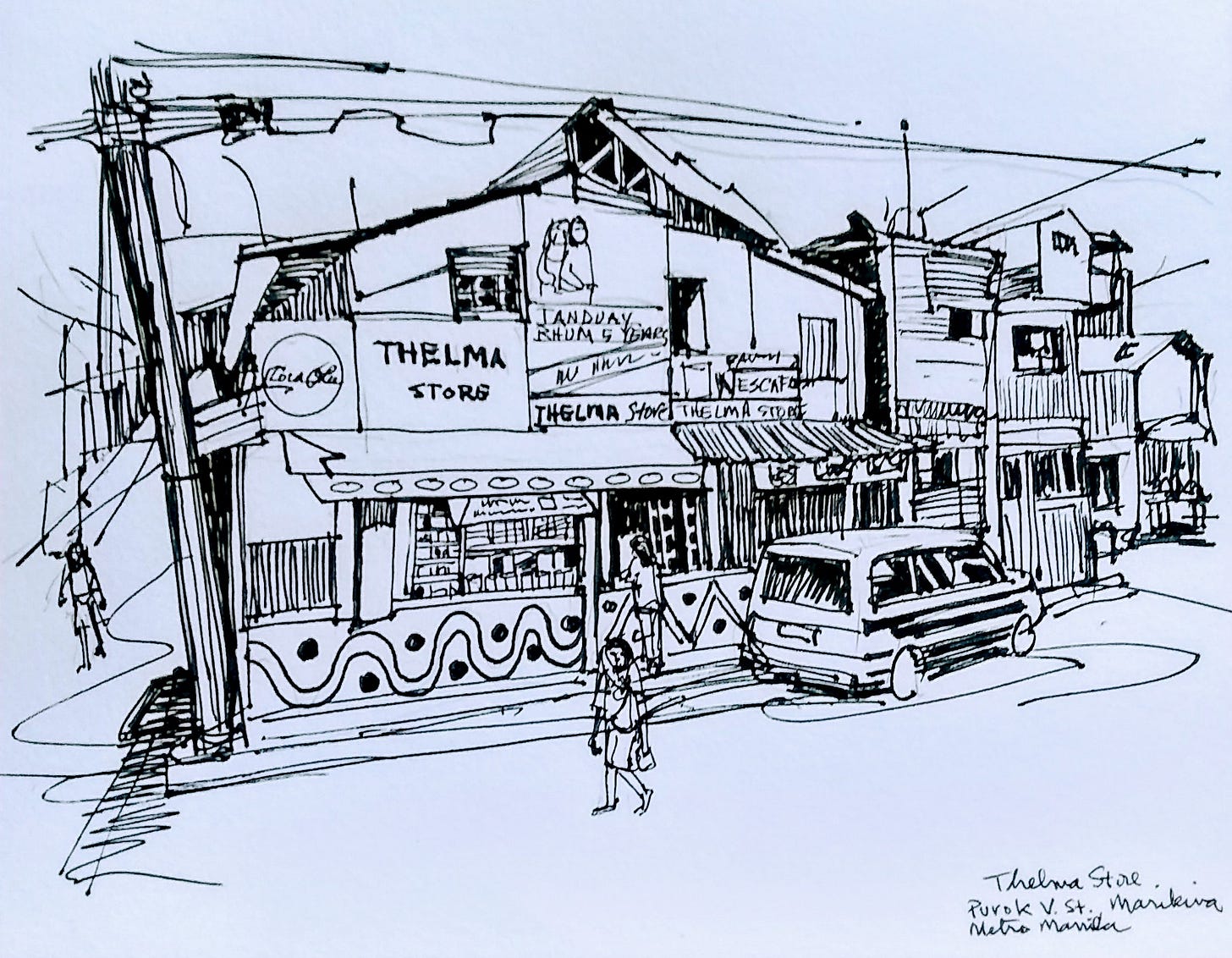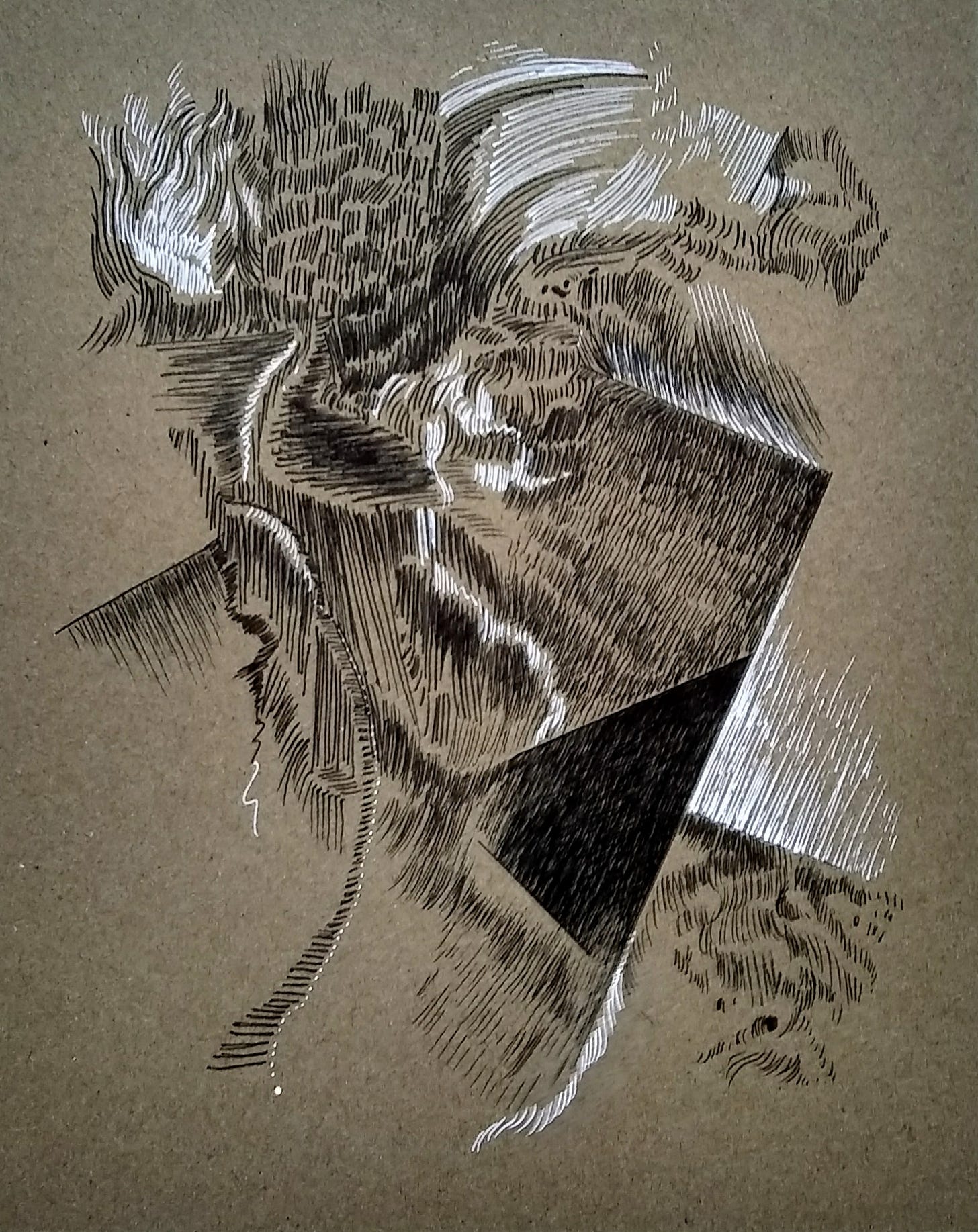This has been a work-heavy week (my editing job), and I’m operating with a sleep deficit, so once again I’m winging it with this newsletter. . .
I’ve been thinking about a possible writing project, involving my parents’ letters to each other beginning at the end of WWII, and continuing through the 1960s. Not that it would be necessarily an exposé of their lives, but more like a jumping off point to understanding their experiences in the Philippines, during and after the War. Both have passed on, as have all their closest family members (parents, siblings), except for me, their only living direct offspring. Neither of them (my father, especially) talked much about their past.
Photo of my mother. Background: old RCA telegram from my father who was working on the USAHS Comfort hospital ship during WWII.
So, for me it would be more like an exploration requiring some historical and family research, and possibly fraught with potentially unpleasant/pleasant surprises (I haven’t read most their letters). Perhaps it will only remain an unfinished document of family history; perhaps it will go further.
Note: that last sentence betrays an ambivalence toward the project, almost - a fear of moving forward with it. But that’s probably why I’m even writing about it here; I intend to go forward. . .
Drawing
My creative “block” seems to be breaking up, and I’ve started drawing again. Below are two very different, yet somehow related, drawings. The first, “Thelma Store,” is of a “sari-sari” (variety) store in a neighborhood where some of my cousins live, in Marikina, Metro Manila, Philippines. Once in awhile, during this seemingly endless “lockdown” phase of the pandemic, I “jump into” Google Maps and explore neighborhoods far from where I live in California. I “drive” down a street on an overcast day in 2016, and by the time I get to the end of the block, it’s early 2019 and the sun is shining. Kids walking on the sidewalk with blurred faces have disappeared.
“Thelma Store,“ ink on paper.
The second drawing is a different kind of landscape. These (related to my Geomancy series) always start completely unplanned, and begin with a few lines laid down repetitively, meditatively, one line leading to the next. They occasionally feel more like “writing“ a landscape, rather than drawing. Sometimes they seem to be sketching out the surface of a strange, furry animal body but, more often than not, they end up looking like a planetary terrain in the midst of transformation or upheaval.
“Stairway.” 8.5 x 11 in. Ink on chipboard.
How is this related to my sketching of actual places (represented in Google Maps), that are somehow connected, yet disconnected to my life? The former virtually “visits” specific places where my parents and family once lived, while the latter may represent a journey through uncharted, wholly imagined territories. It's not that I don't feel a connection to the place where I live now (and where I was born), in the U.S.; it's that I always feel both a connection and disconnection to that "other" place (the place described in letters and stories), as well as a sense of existing in liminal space—as though I can never fully occupy a homeland.
Hyunmin Kim illustrates landscapes and architecture in new ways, combining digital art with xerox images and drawings by hand, and also working in 3D design. I’m interested in how “places” he illustrates begin with "strange feelings . . . He starts by writing stories about emotions and moods.” See “Hyunmin Kim tells stories through the merging of digital and analogue architectural landscapes. By Jyni Ong, in It’s Nice That.
The following article caught my eye because I co-chair a nonprofit that is planning to purchase property and turn it into a cultural center and museum—albeit an historical museum. Nevertheless, I do think that museums of all sorts need to be awake to the implications of their archives and collections. See: “It was a museum, but it was also a crime palace: Michael Rakowitz” Michael Rakowitz: Haunting the West | Art21 "Extended Play"
I like to curate articles on art collectives and communities that are supporting artists or communities in some way:
The “Wide-Awakes Art Collective Food Truck” serves some of New York’s neediest neighborhoods. They partner with Brooklyn Museum, to serve both food – and art! Article by Sarah Cascone in artnet.com: How the Wide Awakes Art Collective Mobilized a Roving Food Truck to Serve Some of New York's Neediest Neighborhoods (artnet.com)
Alief Art House is both a creativity hub and a shipping container, located in Alief, also known as Houston’s International District. It was created by Matt Manalo who curates and organizes art events there, in order to “jumpstart an art-focused movement in the neighborhood and to positively impact Alief’s image.” See: ALIEF ART HOUSE - MATT MANALO. Manalo’s art practice incorporates raw materials and found objects “to tackle geography, cartography, borders, and the idea of displacement, while having a constant conversation about how home should be defined.” Check out Matt Manalo’s website.
My current reading (just received it in the mail today!) is about OuLiPo, OuPeinPo, and OuBaPo: Many Subtle Channels: In Praise of Potential Literature, by Daniel Levin Becker (Harvard U. Press). See more on OuLiPo in the About page for this newsletter.
And if you haven’t subscribed yet, just click the button below! It’s FREE!






